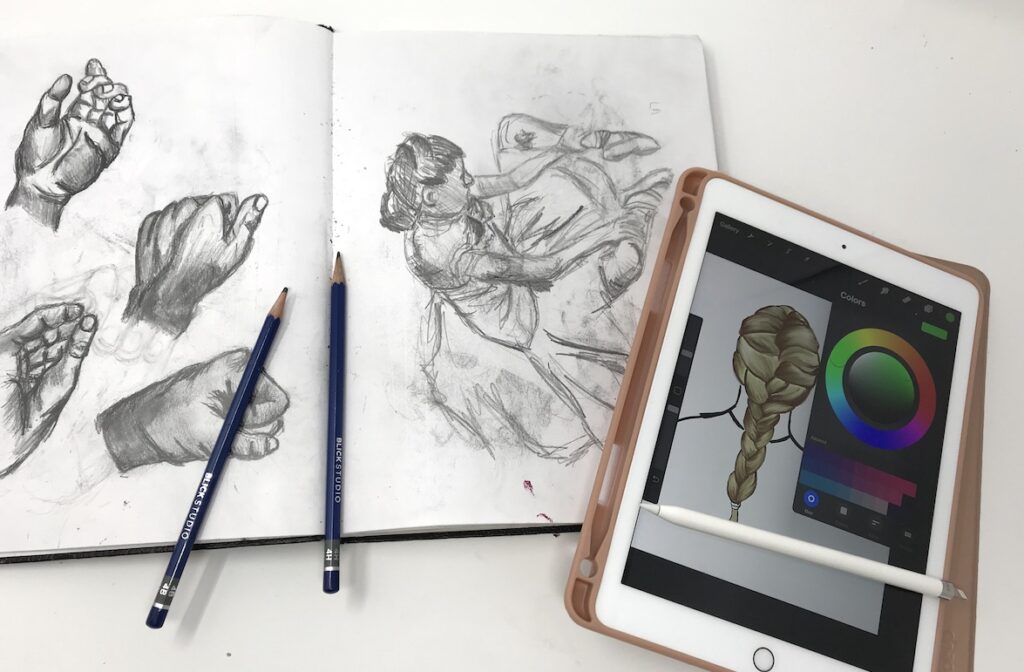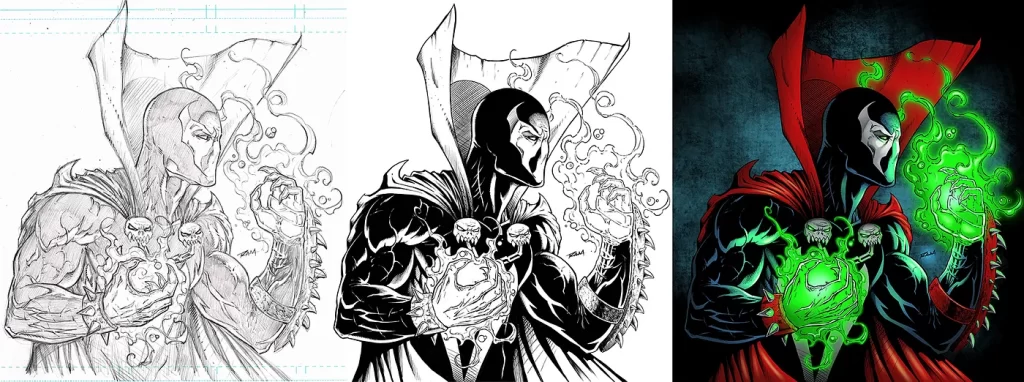
Mixed-media art allows artists to experiment across analog and digital realms in today’s evolving creative landscape. Artists can create captivating works that defy boundaries by blending traditional materials like ink, watercolor, and collage with modern tools such as digital illustration software. If you’re ready to expand your artistic toolkit and explore the hybrid world of mixed media, this guide will show you how to merge both approaches and master the art form seamlessly.
What Is Mixed-Media Art?
Mixed-media art refers to artworks created using more than one medium or technique. It’s not just about combining different materials—it’s about layering textures, meanings, and creative processes. While traditionally, this might involve paper, paint, textiles, or found objects, contemporary mixed media often integrates digital tools like Photoshop, Procreate, or 3D modeling.
The key is the intention: artists use multiple media to enrich their expression, tell layered stories, or challenge conventional formats. Whether on canvas or screen, the possibilities are limitless.
Traditional Techniques That Elevate Mixed Media
Traditional methods can ground your artwork with tactile and expressive textures. Here are a few foundational techniques:
Drawing and Sketching with pencil, charcoal, and ink provide raw, expressive lines that form a solid base; painting with watercolor, acrylic, and oil paints to add richness and depth; collage using paper, fabric, and found materials to bring in texture and narrative elements; and printmaking: linocut or monoprint techniques introduce repetition and bold graphics.
Once you’ve created a base using these materials, you can digitize your work by scanning or photographing it to bring it into a digital environment for further manipulation.

Embracing Digital Tools in Mixed Media Art
Digital technology unlocks new layers of creativity and precision. These are some of the ways digital tools can enhance your mixed media pieces:
Photo Editing Software, such as Adobe Photoshop or Affinity Photo, lets you adjust color, contrast, and composition; Digital Painting Apps like Procreate, Corel Painter, and Adobe Fresco to simulate real brushes while offering endless undo capabilities; Layering & Collage to easily mix scans of physical artwork with digital illustrations or photography; Adding 3D Elements to bring dimension or create virtual mockups using programs like Blender or Adobe Dimension.
Using layers digitally allows you to experiment non-destructively and create high-resolution final outputs for prints or web sharing.
6 Tips for Combining Digital and Traditional Techniques Seamlessly
Blending physical and digital elements in Mixed Media Art requires a thoughtful approach. Here are some best practices:
- Start with a Clear Concept: Know what message or feeling you want your piece to convey.
- Work in Stages: Begin with a physical foundation—sketches, paintings, or textures—and digitize it.
- Maintain Resolution: Scanning at least 300 dpi to preserve detail when digitizing artwork.
- Use Texture Overlays: To maintain a tactile look, you can layer digital textures, brush sets, or scans of handmade marks.
- Print and Rework: Sometimes, printing your digital artwork and reworking it manually is valuable. Then, scan it again for further digital refinement.
- Stay Organized: Use naming conventions and folders to track your layers and iterations. Mixed media can get messy—digitally, too!

Tools and Materials You’ll Need
Here’s a handy checklist of tools for creating mixed-media artwork that bridges traditional and digital:
Traditional Tools:
- Pencils, pens, ink
- Paints (watercolor, acrylic, gouache)
- Brushes, palette knives
- Paper, canvas, fabric
- Glue, tape, scissors
Digital Tools:
- iPad or graphic tablet
- Stylus (e.g., Apple Pencil, Wacom pen)
- Photoshop, Procreate, Illustrator
- Scanner or high-res camera
- Computer with editing software
Developing Your Unique Mixed Media Style
Mastering Mixed Media Art isn’t just about using multiple tools—it’s about developing a voice that reflects your vision. Consider the themes that excite you: urban textures, nature, dreams, and nostalgia. Let these guide your choice of materials and techniques.
Experiment boldly. Keep a sketchbook or digital file for textures and inspiration. Over time, your mixed media process will evolve into something uniquely yours.

Inspiring Tips
Combining digital and traditional techniques in Mixed Media Art invites a world of creative possibilities. Whether layering hand-drawn sketches with digital textures or printing digital collages for further manual painting, this hybrid approach can elevate your artistic expression.
Embrace the process, experiment without fear, and let your art live across mediums. After all, in mixed media, the only limit is your imagination.











